Gen X, history, fandom, feminism, art, whatever. Pretty things from random places; photos are not mine. She/her.
Don't wanna be here? Send us removal request.
Text

Paloma Picasso, 1985 by Horst P. Horst
69 notes
·
View notes
Text
Weird Medieval Marginalia
So I got to see an epically cool manuscript of Arthurian romance (Beinecke MS 229), written in French sometime in the thirteenth or fourteenth century. It contains many fully illuminated illustrations, but the most interesting thing about it turned out to be the marginalia.
All the big images were the same kinds of scenes of knights fighting, people going into or out of buildings, people lying in bed, occasionally people on boats or talking, etc. After a while they just felt repetitive. But there are these little cartoons in the margins, and they are WILD:

I mean I don’t even know what’s going on here.
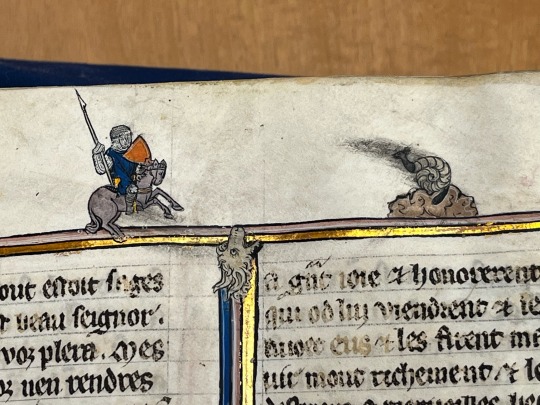
Apparently knights fighting snails appear in a lot of manuscripts. We have no idea what they mean. Might be the medieval version of a meme.
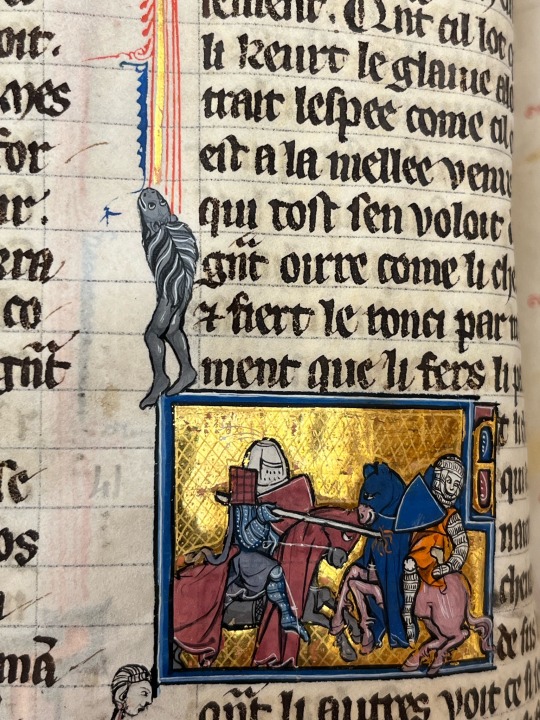
What even is that gray thing?

Knight riding chicken.

Derpy horse.

A very weird-looking unicorn.
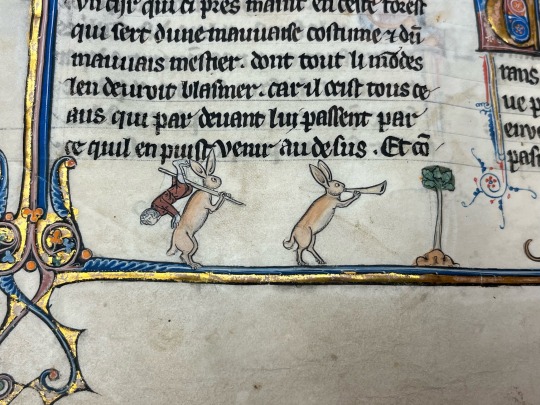
Rabbits hunting people. (RUN AWAY!!! RUN AWAY!!!)
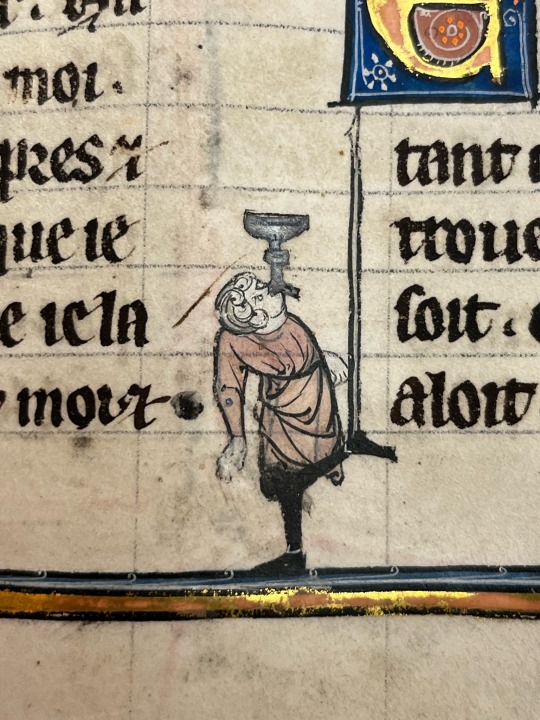
Balancing act.
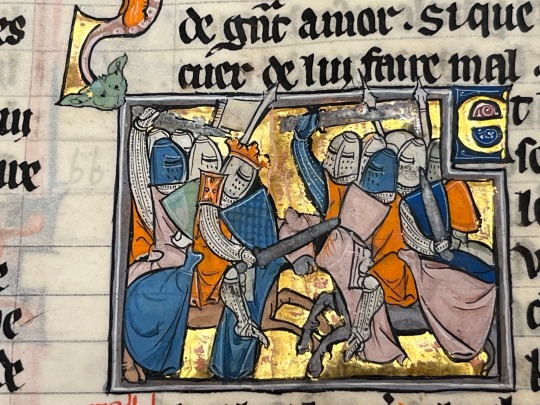
Baby Yoda in the corner there.
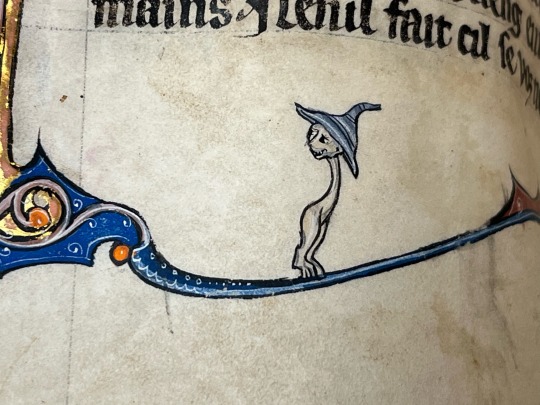
WHAT
There’s plenty more, but that’s as much as I can fit into one post. And this is all one manuscript!
388 notes
·
View notes
Text

If you’re Mae West, these are the only shoes that’ll do. Shoetiful footwear for a frocking fabulous legend, made by Pepenie, c.1945-50. Via FIDM Museum.
1 note
·
View note
Text
Something about Heist movies/media makes my brain fucking explode
Like just a group of new best friends robbing the rich??? Like I can not get enough of strangers stealing things together and becoming best friends??? Makes me feel so many emotions makes my heart explode Something about strangers becoming family through trust and crime makes me feral
Do not psychoanalyze me
1K notes
·
View notes
Photo

Edward Steichen - Marion Morehouse Wearing a Dress by Callot Soeurs (Vogue 1924)
332 notes
·
View notes
Text
Fanart Portraits for the Oberon`s children from the Chronicles of Amber series from Roger Zelazny. I read this series long ago while being in school, so I forgot a lot of stuff except being very immersed into the world.

193 notes
·
View notes
Text

“How to Use a Dial Telephone” 1951.
2K notes
·
View notes
Text

Illustration for the unpublished version of J. R. R. Tolkien's 'The Hobbit' by Peter Klucik, 1990
13 notes
·
View notes
Text
FDR already solved the "what are people supposed to DO in a post-scarcity capitalist society besides imploding and then overthrowing the government" with the New Deal and specifically the public works project/Works Progress Administration. the library doesnt really NEED a cubist mural, especially not a government-funded one, but that's the kind of shit you actually should be directing taxpayer money towards if you want to create a relatively stable capitalist socialist state. i mean we did and do actually need bridges and manhole covers and asphalt and apartment blocks which were also a major part of the program as i understand it, in current year of our lord a ton of American infrastructure is still running on top of New Deal concrete which desperately needs retrofitting and maintenance lol, but the new deal funded a lot of library murals too. borderline unthinkable in 2025 to imagine a widely-known and publicly-accepted presidential plan to occupy idle labor force during an employment crisis with building playgrounds and lawns and so on
#us politics#those fuckers are still mad about the new deal and it was almost 100 years ago#of course they're also mad about the south losing the civil war and that was almost 200 years ago now
2K notes
·
View notes
Text

Simply fantastic photo of a restaurant northeast of Houston, 1945. I love everything about this, including the way Little David spelled "fried." I wonder if that's Little David standing there. I'm betting the food was tasty!
4 notes
·
View notes
Note
Hello apologies for stalking your whole blog and then crashing into your inbox but I see you have thoughts™ on the intersection of archeology and homeric epics and I would love to hear them if you want to share!! (I love hearing about nonsense lmao)
Hi, nice to meet you and I hope you had fun with the stalking! So the lecture* on archaeology and Homer goes like this, with apologies if you already know this:
Homeric epic is not history. It´s not describing real events, it´s really, really debatable whether at the core of the Iliad may be real events at all and I´m personally leaning towards no. (Pretty much no one ever tries to date the events of the Odyssey to a particular period, for obvious reasons, except for general comments about early Greek colonies and the like).
On top of that, the development of both poems is super complicated and very long, which means that it is straight up impossible to date the text as a whole. At the very least we need to make a distinction between the time the poem was written** and the centuries and centuries of oral poetry tradition that went into the stories and the very language of the poem. Scholars seem to mostly agree that this tradition started around the time (i.e. shortly before or after) the Late Bronze Age collapse (1200 BCE), which in Greece mostly took the form of the palatial elite disappearing and certain forms of trade breaking down, while the rest of the culture stayed fairly unaffected.
New elites came up in the immediate aftermath, which very likely tried to form a link to their predecessors to legitimize themselves - this kind of storytelling may have provided one way to do that. This process then continues into the Early Iron Age (1050-750/700 BCE) until whenever the poet(s) of the epics came along. (Let´s not go into the how many authors question here, except to say that one per poem seems to be not unlikely). Therefore Homeric epic likely contains some far flung and quite fantastic memory of Mycenaean Greece, but it mostly developed during the Early Iron Age.
So at best you can try to date individual elements to somewhere between the Late Bronze Age and the end of the 8th century or so, once again depending on when you actually want to set the date for the writing***. Even that is often pretty fraught. At the end of the day the poems are amalgamations of various periods and they are depicting a mythological, heroic past in a way that is clearly important for the identity of the Greek people in the Archaic period and later. Once again: not history.
Which is why it is incredible frustrating when you come across archaeological literature that cheerfully tells you "we can use Homeric epic as a model for what happens in this or that society, since it clearly dates to the Late Bronze Age/Early Iron Age/7th century BCE". It of course always "clearly dates" to the time the scholar is needing a model for and there is oddly enough no agreement which time of the three it actually is.
Prehistoric archaeology, at least in Germany, is a bad offender in that regard, but I also managed - with the permission of my professor, I hasten to add - to completely derail a presentation I was supposed to give on a group of early graves at the Kerameikos into literary analysis. The author of the study I´d been working from had used Homeric epic as an argument for how a specific burial rite developed and boy, it was bad. No awareness of any oral poetry tradition at all. Like, zero. He took everything in there to mean it accurately reflected developments in the 7th century while also completely neglecting context clues in the text****.
Homeric epic in my experience also constantly gets quoted as an example of what is called a big man society in (more traditional) anthropology, aka a society in which status is determined by personal achievement instead of being hereditary. And while it may look that way on first glance, with all the talk of fame and heroic deeds etc etc, the thing is that status in "Homeric society" is very much hereditary. It´s just that if you don´t back that up with personal achievements, you may lose it rather quickly. So forcing the text onto a model that is in itself quite schematic does not work at all.
The bottom line of which is that you really should be quite careful if anyone is using Homeric epic to back up archaeological analysis (or if you are planning to do so yourself). It´s not impossible, but it requires a good understanding of the history of the text (and ideally some knowledge of Ancient Greek, to avoid translation issues, or at least good philological sources on translation). Just using it as a one-size-fits-all solution for archaeological models, simply because it is the oldest text of western literature we have, is not going to lead to good results.
Thus concludes the Thoughts.
*I did teach this to actual students at one point, so I´m really trying to keep it short here^^ I will of course fail miserably at this.
**My money is on the first quarter of the 7th century, if you force me to narrow it down - I can and will elaborate on my logic, if asked^^
***If you are Martin West, this means after 630 BCE for the Odyssey and up to 640 for the Iliad. If you are anyone else, you´ll probably lower that a bit.
****Lovely stuff. "There is no mention of music in the older Iliad, especially in feasting scenes, therefore feasting must have become rapidly more elaborate in the brief time between the writing of the Iliad and the Odyssey, where music is present." Which is a) wrong, and b) may have to do with the fact that the Iliad is set in an army camp and not at any king´s court.
234 notes
·
View notes
Text

'The Tempest' by Leo and Diane Dillon, 1965
3K notes
·
View notes
Text


It is so crisp, this pale purple c 1912 summer dress, I imagine a fragrant lavender scent drifting in its wake. It belonged to Heather Firbank who made a point of wearing colours that complimented her name, this fresh frock designed by London firm Mascotte, V&A
4 notes
·
View notes
Photo
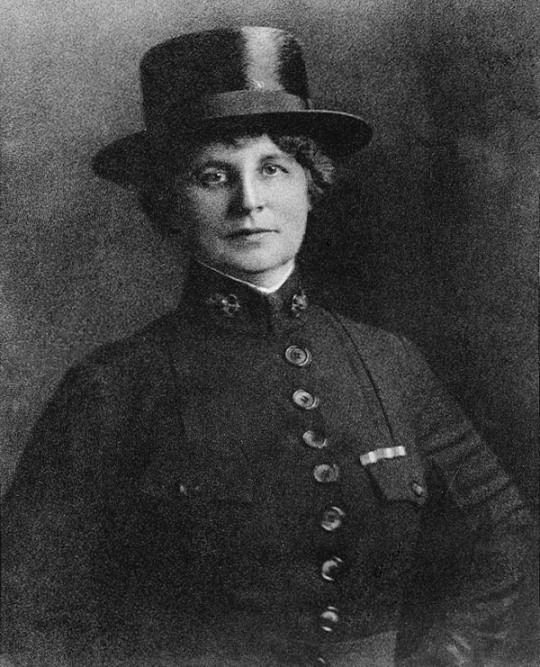
Lenah H. Sutcliffe Higbee (1874- 1941), US Navy Nurse Corps
She was born as Lenah H. Sutcliffe and trained as a nurse at the New York Postgraduate Hospital in 1899 and shortly afterwards entered private medical practice. Lenah Higbee trained at Fordham Hospital, New York City in 1908 and was one of the first women to join the newly formed US Navy Nurse Corps. These twenty women, later referred to in the Navy as “The Sacred Twenty”, were the first women to formally serve in the United States Navy.
In April 1909, Higbee was promoted and became Chief Nurse at Norfolk Naval Hospital. Higbee, by now widowed by Lieutenant Colonel John Henley Higbee, was transferred to the position of Superintendent of the Navy Nurse Corps in 1911. She thus succeeded the first Superintendent Esther Hasson. In this position she led the US Navy Nurse Corps during the First World War. When she was awarded the Navy Cross in 1918 in recognition of her service, she became the first living woman to receive the honour. She took her leave from the military on 23 November 1922.
She was buried at Arlington National Cemetery after her death.
105 notes
·
View notes
Text

Gilded copper plaque depicting a Bishop, most likely Archbishop Bruno of Cologne, thought to be crafted by Nicholas of Verdun, circa 1180-1200
from The Art Institute of Chicago
334 notes
·
View notes
Text

International Day of the World’s Indigenous Peoples
On the 9th of August, the UN celebrates the International Day of the World’s Indigenous Peoples, and we celebrate some Indigenous queer history! Here’s a few of our podcasts you can check out to learn some more!
We’wha (pictured)
Born c.1849 at Zuni (now in New Mexico, USA), We’wha was a lhamana - a Zuni gender including both masculine and feminine roles. Like many lhamana, We'wha was a highly skilled craftsperson, proficient in both traditionally masculine, and traditionally feminie crafts.
In 1885, We’wha travelled to Washington DC as a representative of the Zuni people, where they worked with anthropologists and the Smithsonian museum to demonstrate and share information about Zuni crafts and culture, and met US President Grover Cleveland.
Click here to check out our podcast on We'wha!
[Image source]
Kapaemahu
According to Hawai'ian oral histories, in around the 1500s, four healers visited Honolulu from what are now the Society Islands. These healers - named Kapaemahu, Kahalao, Kapuni, and Kinohi, were māhū, a gender recognised in Kānaka Maoli (Native Hawai’ian) culture, with a particular focus on healing and caring roles.
When they departed Hawai'i, the four māhū left behind four huge stones as a momento of their visit, imbued with their healing powers, which are still revered in Hawai'i today.
Click here to check out our podcast on Kapaemahu!
Osh-Tisch
Osh-Tisch was a batée born in the 19th-century Crow Nation. Batée is a uniquely Crow gender identity, describing a person assigned male at birth, who performs female as well as specifically batée social roles. Osh-Tisch was renowned for their skills as a craftsperson, their bravery in the 1876 Battle of the Rosebud, and as the best poker player in the region. In the face of attempts by the US government to force assimilation to Western ideas of gender, Osh-Tisch’s community fought for their right to express their identity.
Click here to hear our podcast on Osh-Tisch!
199 notes
·
View notes
Text

Bear mom and her cubs. 'the Rochester Bestiary’, England ca. 1230 (British Library, Royal MS 12 F XIII, fol. 22v).
1 note
·
View note